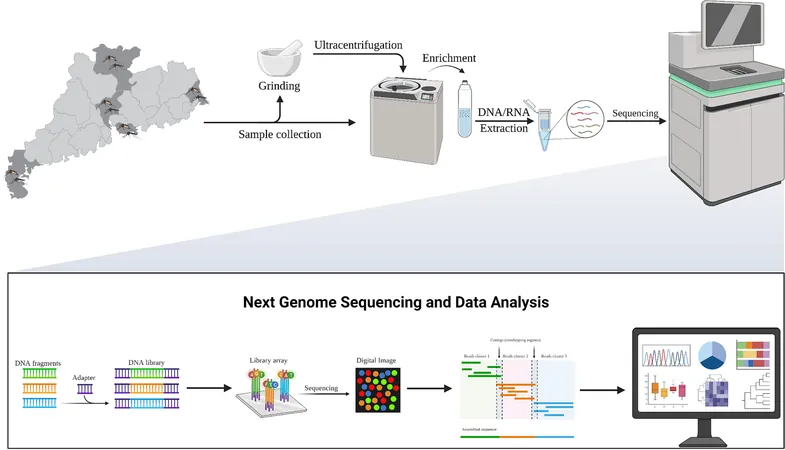
Unveiling the Mystery of Dark Matter: Searching for Axions in Polarized Gas
2024-11-04
Author: Ming
The Axion: A Long-Sought Dark Matter Candidate
Originally proposed to solve a puzzling aspect of particle physics—the absence of time-reversal violation in strong interactions—the axion is considered a viable candidate for dark matter. Based on theoretical models, its mass is estimated to lie between 10 µeV/c² and 1 meV/c². Over recent years, researchers have employed various techniques, from microwave cavities to radio telescopes, to detect signatures of axions. However, many of these efforts have explored mass ranges that extend beyond the axion window.
Innovative Experimental Techniques
The current research builds on cutting-edge advancements in quantum sensing and information. By creating polarized ensembles of xenon-129 atoms using a method called spin-exchange optical pumping, the researchers generated an environment where the axion-mediated interactions can be critically examined. This method involves mixing xenon-129 with rubidium-87 and exposing this mixture to circularly polarized light to achieve polarization.
The innovative experiment features two cells of polarized gas situated 60 mm apart. By applying a magnetic-field pulse, the researchers were able to observe spin precession of the xenon atoms, which could hint at the presence of axions through deviations in spin polarization between the two cells. They strategically shielded these cells from typical magnetic interactions, enhancing the sensitivity of their measurements.
Achievements and Future Impacts
Although the team did not detect any signals indicative of axions, this study pushed the boundaries of existing knowledge, setting new limits on axion coupling strength in the micro-electron-volt range. Impressively, these limits improved upon previous findings by a factor of 50 at 10 µeV, falling neatly into the axion window.
Nevertheless, the current measurement precision is insufficient to dismiss the possibility of "window" axions contributing to dark matter. With the innovative techniques pioneered in this research, future experiments could explore other exotic spin-dependent interactions and their connections to cosmological phenomena, such as decaying dark matter or binary black holes.
Conclusion
As our understanding of the universe evolves, the hunt for elusive particles like the axion continues to drive the forefront of scientific discovery, holding the promise of unraveling the mysteries still shrouded in the fabric of the cosmos. In a world increasingly fascinated by the undetected forces of nature, this study ignites hope and curiosity, embodying the essence of scientific exploration. Will we finally uncover the hidden secrets of dark matter? Stay tuned as the quest for knowledge unfolds!



 Brasil (PT)
Brasil (PT)
 Canada (EN)
Canada (EN)
 Chile (ES)
Chile (ES)
 Česko (CS)
Česko (CS)
 대한민국 (KO)
대한민국 (KO)
 España (ES)
España (ES)
 France (FR)
France (FR)
 Hong Kong (EN)
Hong Kong (EN)
 Italia (IT)
Italia (IT)
 日本 (JA)
日本 (JA)
 Magyarország (HU)
Magyarország (HU)
 Norge (NO)
Norge (NO)
 Polska (PL)
Polska (PL)
 Schweiz (DE)
Schweiz (DE)
 Singapore (EN)
Singapore (EN)
 Sverige (SV)
Sverige (SV)
 Suomi (FI)
Suomi (FI)
 Türkiye (TR)
Türkiye (TR)
 الإمارات العربية المتحدة (AR)
الإمارات العربية المتحدة (AR)